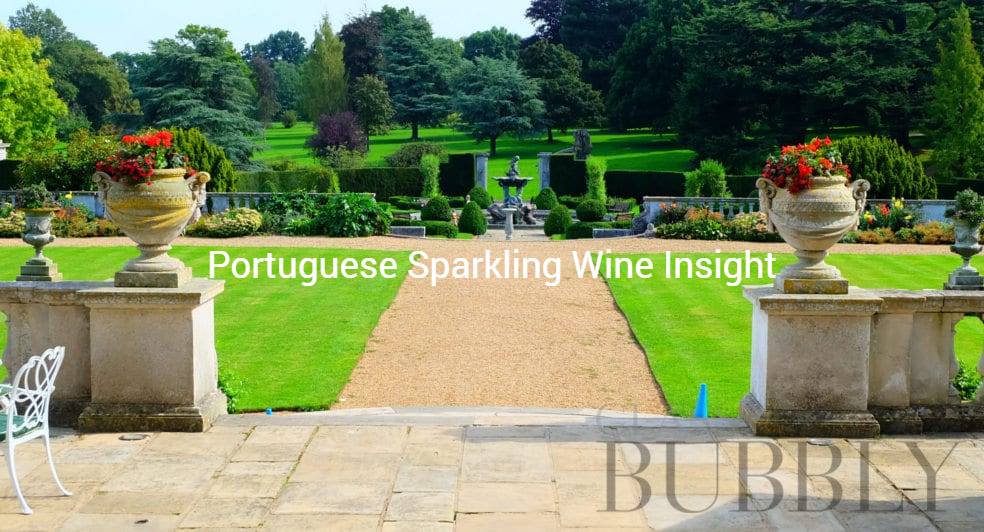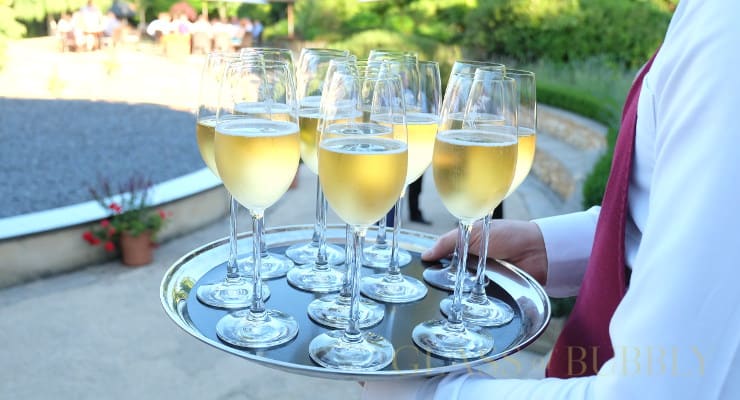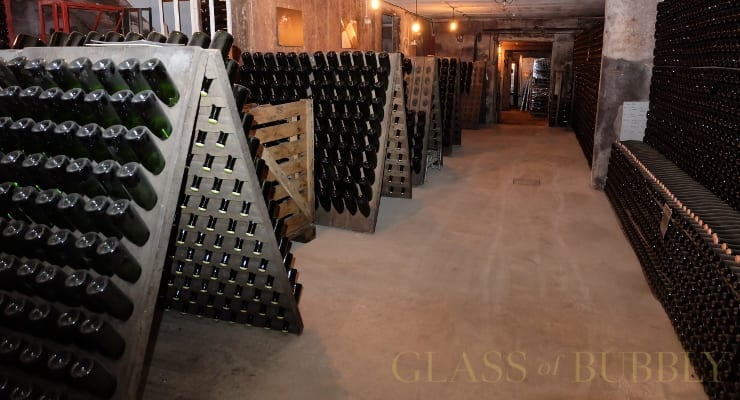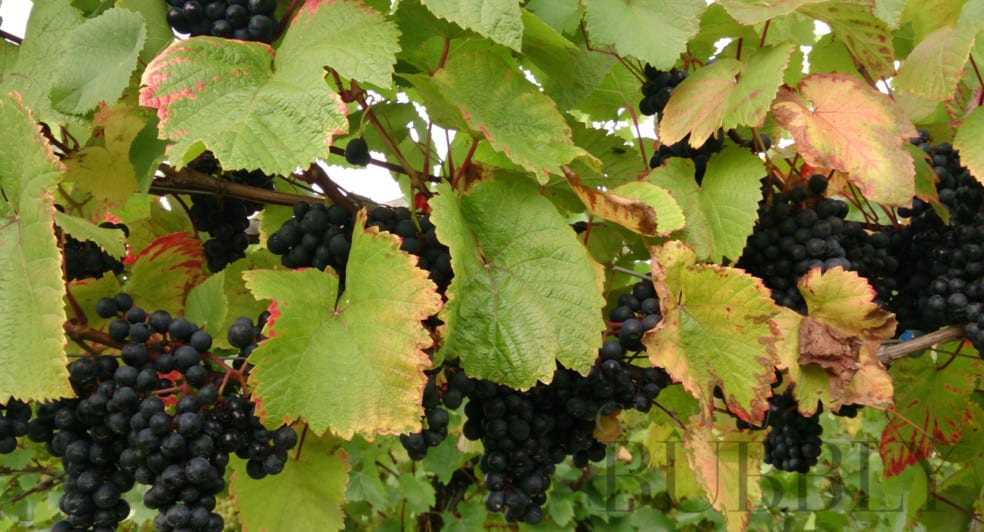Portuguese Sparkling Wine Insight
9th May 2023

Portugal maybe is not the first country you imagine thinking about a glass of bubbles, but it is definitely an option to take a closer look. Even if in terms of quantity Portugal enters as “other countries” in OIV statistic, in terms of quality it worth to be discovered.
Sparkling wine in Portugal is called “espumante” and it can be made using both Charmat and traditional method with bottle fermentation and minimum ageing on lees for 9 months when it comes to certified appellation. There are also some traditional categories with longer ageing period, such as “Reserva” for 12-24 months, “Super Reserva” or “Extra Reserva” for 24-36 months and “Velha Reserva” or “Grande Reserva” more than 36 months.
Even though it represents less than 1% of all wine produced in the country, it is a growing category. According to OIV data, Portugal is one of the countries with the most significant increases in their sparkling wine production over the period 2008-2018. In order of the average annual growth rate, the UK grows +33%/year, Portugal +18%/year, Brazil +7%/year, and Australia +3%/year. What differs Portugal from other countries with quickly growing sparkling production is a bubbling history that goes back to the end of the XIX century.
Past and Present of Portuguese Sparkling Wines

One of the pioneers of Portuguese sparkling wine was the agricultural engineer José Maria Tavares da Silva who began to apply the so called “Champagne method” (now, by imposition of the CIVC called “traditional”) first in the Douro region in 1885 and in 1889-1890 in Bairrada. A few years later, in 1898, Caves Raposeira was established in Lamego initiating one more bubbles epicenter.
Until the nineties of the last century sparkling wine production in Portugal was polarized in these two centres: Bairrada and Lamego with DO Távora-Varosa where two most prominent brands of Raposeira and Murganheira continue to have (deservedly) their faithful funs in Portugal and abroad. Today sparkling wines are produced all over the country, from northernmost Vinho Verde to the Algarve in the South, but the “big two” are still the same.
Bairrada and Távora-Varosa together produce about 75% of all Portuguese bubbles certified as DO or IG, according to the most recent IVV statistic data (Bairrada is about 40% and Távora-Varosa more than 35%). Tejo region is the third one in terms of quantity, contributing with almost 14% to sparkling wine production, and the Lisbon region is the fastest-growing one.
Bairrada

Bairrada is not only the biggest and the oldest of Portuguese wine regions related to sparkling wine production. It is intrinsically bubbly from the cultural and gastronomic point of view. Bubbles are in their veins and on their tables, making a preferable company to suckling pig. It is not a coincidence that in July last year, Bairrada was chosen by the renowned Concours Mondial de Bruxelles as a host of the first sparkling wine session of this contest.
Bairrada is located on a low-lying coastal platform with clay-calcareous and sometimes sandy soils. With an altitude between 40 and 120 meters, nothing represents a barrier to the Atlantic influence that proliferates inland, bringing freshness, humidity and frequent morning fog.
Ironically, production of sparkling wine was included in Bairrada DO status only in 1991, nevertheless it still has its history with more than 130 years. After the first experiences of José Maria Tavares da Silva, in 1893 was founded the Bairrada Wine Association with the aim of producing and marketing “sparkling wines like champagnes”. In 1920s the “Caves” – underground cellars dug into the soft limestone rock to serve as a natural and temperature-controlled environment for the aging of their wines – started to immerge in the region. Some of them are still successful producing great Espumante: Caves São João, Caves Messias, Caves Aliança, for example.
Today, many of these Caves have been renovated and modernized, but they still retain their traditional charm and unique characteristics. They are open to the public for tours and tastings, providing an immersive experience for wine lovers. Some smaller estates appeared in the last 30 years, such as Luís Pato, Quinta das Bágeiras, Kompassus, Filipa Pato, producing serious and expressive Espumante.
Even being authorized 11 white and 17 red grape varieties for DO Bairrada, for sparkling are normally used Portuguese varieties like Baga, Maria Gomes, Bical, Cercial as well as traditional French Pinot Noir and Chardonnay.
Baga has a special status not only because it is the most planted grape variety in Bairrada (responsible for 47% of the region plantings), but also thanks to its particular characteristics. Baga is a late ripening variety; it is never in a rush, keeping its naturally high acidity well preserved. The moderate climate of Bairrada and the slow ripening of Baga provide a great advantage: it can be harvested early for the base of Espumante, a little later to make lighter and less extractive wines and when picked late, results in structured wines with a great aging potential.
The successful partnership of Baga and Bairrada became reflected in the “Baga Bairrada” sparkling wine project in 2015, which aims to showcase the unique qualities of Baga in the terroir of Bairrada through the production of traditional method sparkling wines of high quality. “Baga Bairrada” may only be brut nature, extra-brut or brut and must age at least 18 months in a bottle after tirage.
Maria Gomes (called Fernão Pires in the rest of the country) is also widely planted early ripening, aromatic grape variety with low acidity, but when grown in appropriate conditions and harvested early, it works well for sparkling. Bical is more neutral in aroma and gives structure and body. Arinto and Cercial are two grape varieties with great acidity.
Távora-Varosa

Tavora-Varosa is a small appellation between Douro and Dão, focused mostly on sparkling wine production. It obtained DO status in 1989, becoming the first Portuguese wine region to be demarcated for the production of DO sparkling wine.
The vineyards are located between 500 and 800 meters above sea level, marked by an extreme climate with a strong continental influence. Granite soils prevail, with some schist stains.
Among 18 whites and 19 red authorized grape varieties, the predominant are Malvasia Fina, Gouveio, Síria, Fernão Pires, Touriga Franca, Trincadeira e Touriga Nacional, with Pinot Noir and Chadonnay playing an important role for the best espumante.
Murganheira is practically an ambassador for the appellation. This company has passion and patience to age their premium sparkling for many years. We can talk about 7-8 years that the bottles stays in the beautiful long granite galleries.
Espumante from other Regions

Sparkling wine made of Alvarinho is a new tendency in Vinho Verde region, especially in Monção e Melgaço subregion, not yet in terms of quantity, but undoubtedly in terms of quality. The variety manages to join two dimensions, important for the sparkling wine: the mouth volume and the excellent acidic structure. It obviously has a strong varietal character, but harvested early it is not too exuberant, resulting in espumante with a great balance.
To talk about high-end Portuguese bubbles without mentioning Vertice would be incomplete. This project was born in 1988 exclusively for sparkling wine production in Douro valley. It might sound surprising to someone because the Port wine and full bodied structured red are intrinsically and historically related to this region.
Actually in Douro region vines planted at different altitudes have completely distinct growing conditions. While grapes for port wines are grown in the valley near the river, grape varieties for sparkling wine are planted in Alijó, at more than 500 m above sea level. Among the grape varieties used for Vertice we can highlight Pinot Noir, Chardonnay, Gouveio and also Malvasia Fina, Viosinho and Touriga Franca.
So, next time you think about a glass of bubbles, try a Portuguese one.
Image Credit: Portugal Flag
![]()
Valéria Zeferino DipWSET
Wine writer and wine critic in Portuguese wine magazine Vinho Grandes Escolhas, based in Lisbon. Wine educator, Certified Port Educator, Madeira Wine Educator and Wine Judge. Completing a Master’s degree in Oenology and Viticulture at the University of Lisbon - Higher Institute of Agronomy in Lisbon.
